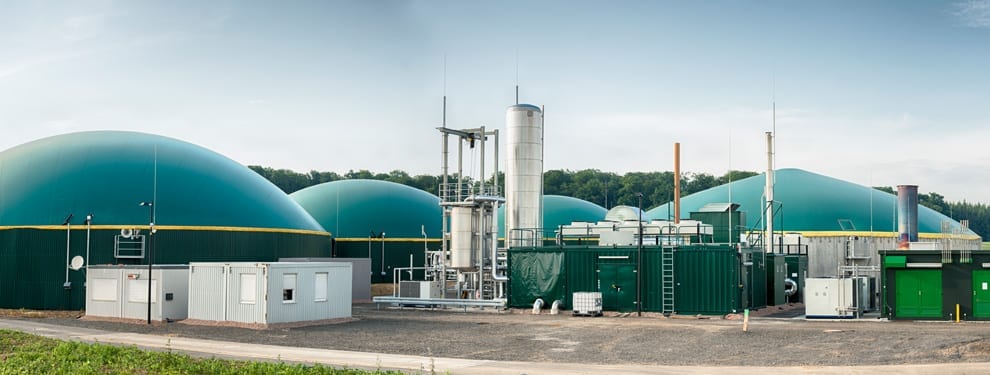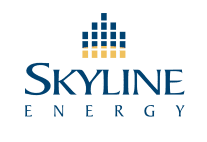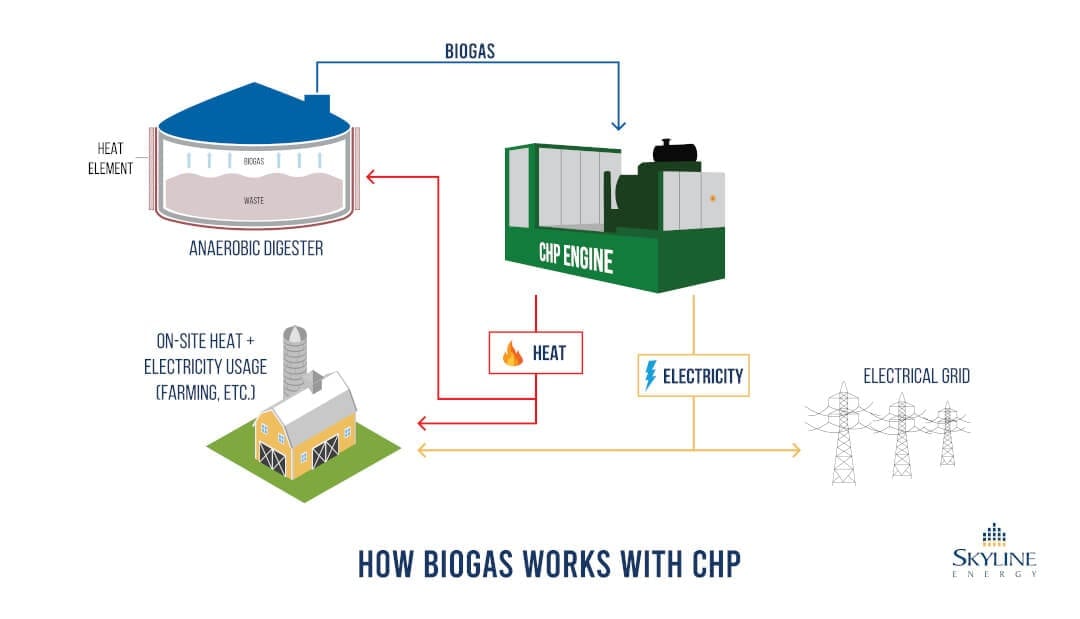
Skyline Energy Explains: How Biogas Works With CHP
February 1, 2021 Press Releases
Combined Heat & Power (CHP) systems, which are also referred to as cogeneration or cogen systems, are engines that generate both electricity and heat (as a by-product) simultaneously. Most biogas facilities use a CHP engine to convert biogas into the end product of electricity.
How biogas creates heat and electricity via CHP
- The CHP engine burns the biogas in its cylinders.
- As the biogas combusts, it releases heat. In fact, at many biogas sites, some of this heat energy goes back to heating the element that surrounds the anaerobic digester where the biogas was produced, and/or goes back to heat treat organic waste in a pasteurisation unit —thus creating a self-sufficient cycle of heat production and consumption.
- Additionally, the biogas combustion produces mechanical force, which drives the engine’s turbine to produce electricity. At many biogas sites, some of this electricity goes back to powering the surrounding equipment. The rest is sold to the electricity grid.
One of the most important factors that determines the volume of heat and electricity produced is the methane concentration of the biogas itself. The amount of methane in biogas will determine how much gas is required to deliver a certain amount of electricity (a higher concentration of methane is more efficient).
Methane concentration will vary according to the type of biogas production (e.g. landfill vs. anaerobic digester) and the waste elements fed into the digestion process (a higher concentration of fats will produce a higher concentration of methane).
Skyline Energy is a proud member of the Canadian Biogas Association. We believe that biogas can play a major role in accelerating Canada’s clean energy generation objectives, and we’re excited to see the biogas sector gaining momentum across the country.

Tyler Balding
Director of Business Development
Skyline Energy
Tyler Balding uses his wealth of experience in the clean energy industry to originate and obtain new renewable energy assets for Skyline Clean Energy Fund. Specializing in solar and battery technologies, he has worked previously at Panasonic Eco Solutions Canada and Canadian Solar Inc., securing large-scale projects and bids for both firms.
About Skyline Clean Energy Fund
Skyline Clean Energy Fund (“SCEF”) is a privately owned and managed portfolio of medium to large scale clean energy assets, focused on acquiring income-producing assets across Canada, under long-term government contracts.
SCEF is offered as an alternative investment product through Skyline Wealth Management Inc. (“Skyline Wealth Management”), the exclusive Exempt Market Dealer (EMD) for SCEF.
SCEF is committed to surfacing value to its investors through asset monitoring and optimization, while providing a sustainable investment product based in clean, renewable energy.
To learn more about SCEF and its asset manager, Skyline Energy, please visit SkylineEnergy.ca.
To learn about additional alternative investment products offered through Skyline Wealth Management, please visit SkylineWealth.ca.
Skyline Clean Energy Fund is operated and managed by Skyline Group of Companies.
For media inquiries, please contact:
Cindy BeverlyVice President, Marketing & Communications
Skyline Group of Companies
5 Douglas Street, Suite 301
Guelph, Ontario N1H 2S8
cbeverly@skylinegrp.ca
More from this category:

Have you heard of biogas?
Skyline Clean Energy · SCEF Talks Biogas When it comes to identifying types of clean energy production, solar and wind are likely first to come to mind. But have you heard of biogas? Although it’s a smelly business, biogas holds enormous potential in Canada’s future clean energy landscape. In this 10-minute podcast, Rob Stein, President, [...]
Skyline Clean Energy Limited Partnership Announces Closing of $52M Bond Financing
[Guelph, Ontario – July 25, 2023] Skyline Clean Energy Limited Partnership (Skyline Clean Energy Fund), a Guelph, Ontario-based equity growth fund investing in clean energy assets, announced the closing of its inaugural $52MM bond financing on a sizable solar asset portfolio through a private placement of senior secured notes. The financing was facilitated by Scotia [...]
Skyline Clean Energy Fund Purchases 2.37MW/DC rooftop solar system
SCEF enters new community of Strathroy, Ontario


